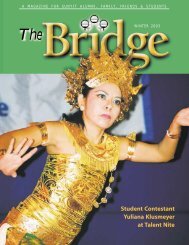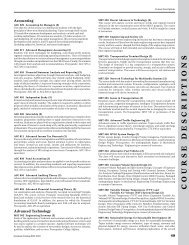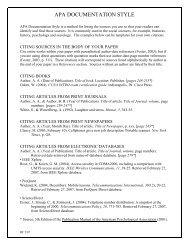Expanding the Public Sphere through Computer ... - ResearchGate
Expanding the Public Sphere through Computer ... - ResearchGate
Expanding the Public Sphere through Computer ... - ResearchGate
Create successful ePaper yourself
Turn your PDF publications into a flip-book with our unique Google optimized e-Paper software.
CHAPTER 4. ABORTION DISCOURSE IN THE PUBLIC SPHERE 64<br />
abortion on moral grounds as early as 1797. Clear moral distinctions were made<br />
between <strong>the</strong> mo<strong>the</strong>r’s life and <strong>the</strong> life of <strong>the</strong> fetus:<br />
The public did not consider <strong>the</strong> embryo “not alive” in <strong>the</strong> biological sense<br />
.... Ra<strong>the</strong>r, public (and much medical opinion) seems to have been that<br />
embryos were, morally speaking simply not as alive as <strong>the</strong> mo<strong>the</strong>r, at least<br />
until quickening – and sometimes later than that, if <strong>the</strong> pregnancy threatened<br />
<strong>the</strong> life of <strong>the</strong> woman (Luker 1984, 26).<br />
On <strong>the</strong> o<strong>the</strong>r hand, Sitaraman (1994, 4) contends that fetuses prior to quickening<br />
were “not considered a human being, and abortions were viewed as a point on <strong>the</strong><br />
continuum including contraception,” and suggests that ignorance of pregnancy<br />
and fetal development contributed to <strong>the</strong> lack of public discussion of abortion.<br />
<strong>Public</strong> discourse during <strong>the</strong> criminalization period is dominated by <strong>the</strong> medical<br />
profession, and it is clear that <strong>the</strong> voices of women and ordinary citizens were<br />
largely excluded from <strong>the</strong> limited debate that did occur. One indication of <strong>the</strong> lack<br />
of public debate during this period is <strong>the</strong> complete absence of articles concerning<br />
abortion indexed in <strong>the</strong> Reader’s Guide to Periodical Literature prior to 1890. In<br />
addition, nei<strong>the</strong>r <strong>the</strong> religious nor legal communities appear to have made significant<br />
contributions to <strong>the</strong> public discussion of <strong>the</strong> abortion issue. This is surprising,<br />
given <strong>the</strong> Catholic church’s 1869 papal statement abandoning <strong>the</strong> distinction between<br />
early and late abortions (Tribe 1990, 31), and given <strong>the</strong> large number of<br />
new state laws enacted.<br />
By contrast, <strong>the</strong> newly emergent American Medical Association regularly issued<br />
regular reports and papers urging that decisions about abortion be made by licensed<br />
physicians on <strong>the</strong> basis of <strong>the</strong>ir superior education, technical and moral<br />
standing. In an interesting rhetorical feat, simultaneously claimed “both an absolute<br />
right to life for <strong>the</strong> embryo (by claiming that abortion is always murder) and<br />
a conditional one (by claiming that doctors have a right to declare some abortions<br />
’necessary’)” (Luker 1984, 32).<br />
During <strong>the</strong> fifty years following <strong>the</strong> criminalization period, discussion about abortion<br />
remained by and large confined to medical, legal and religious professionals.<br />
There are no articles indexed under “abortion” Reader’s Guide to Periodical Literature<br />
until 1929, and <strong>the</strong> number of articles from 1929 to 1960 never reached<br />
more than twelve in any year (See Figure 4.1 on <strong>the</strong> following page). Once <strong>the</strong> pattern<br />
of criminalization was established, whatever public discourse about abortion
















